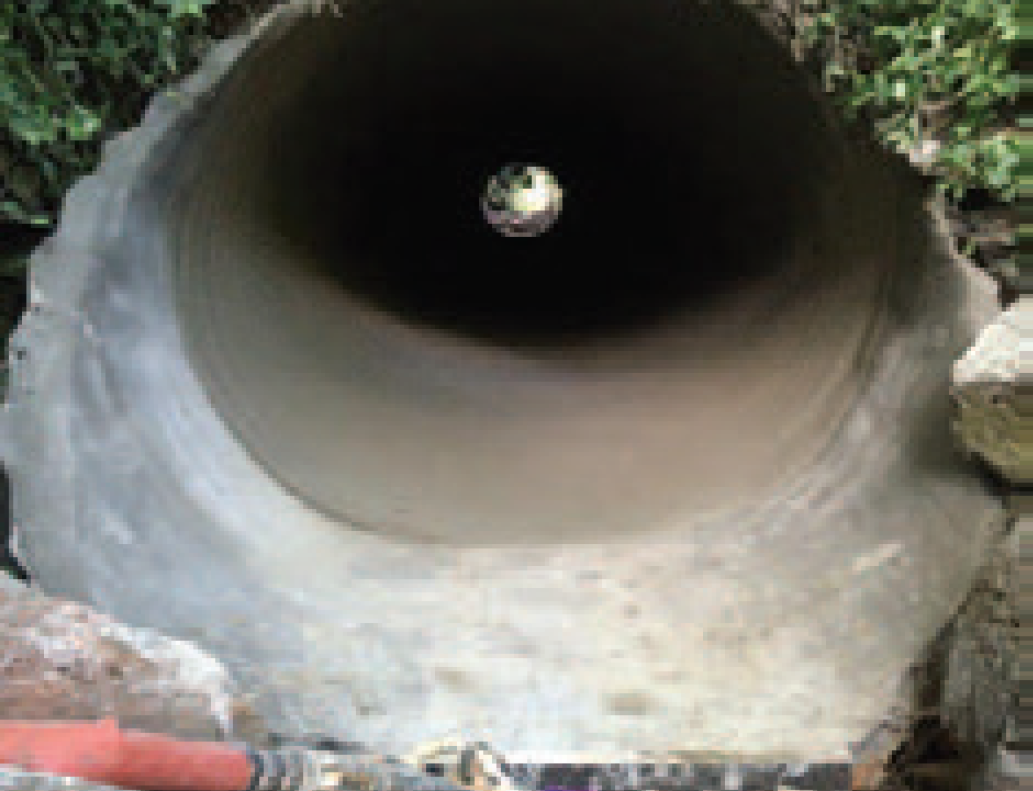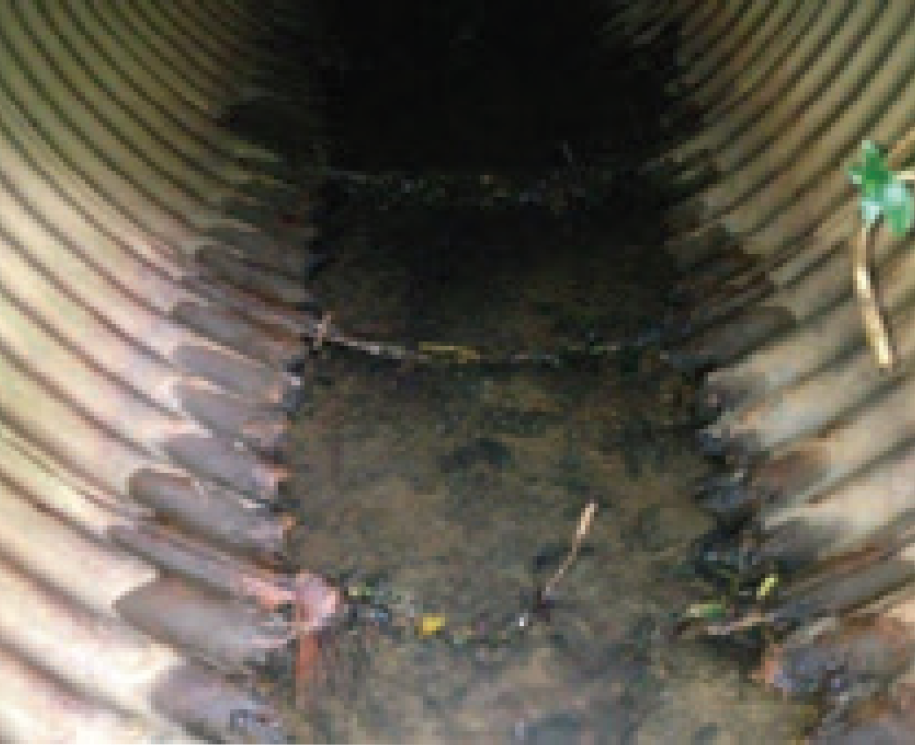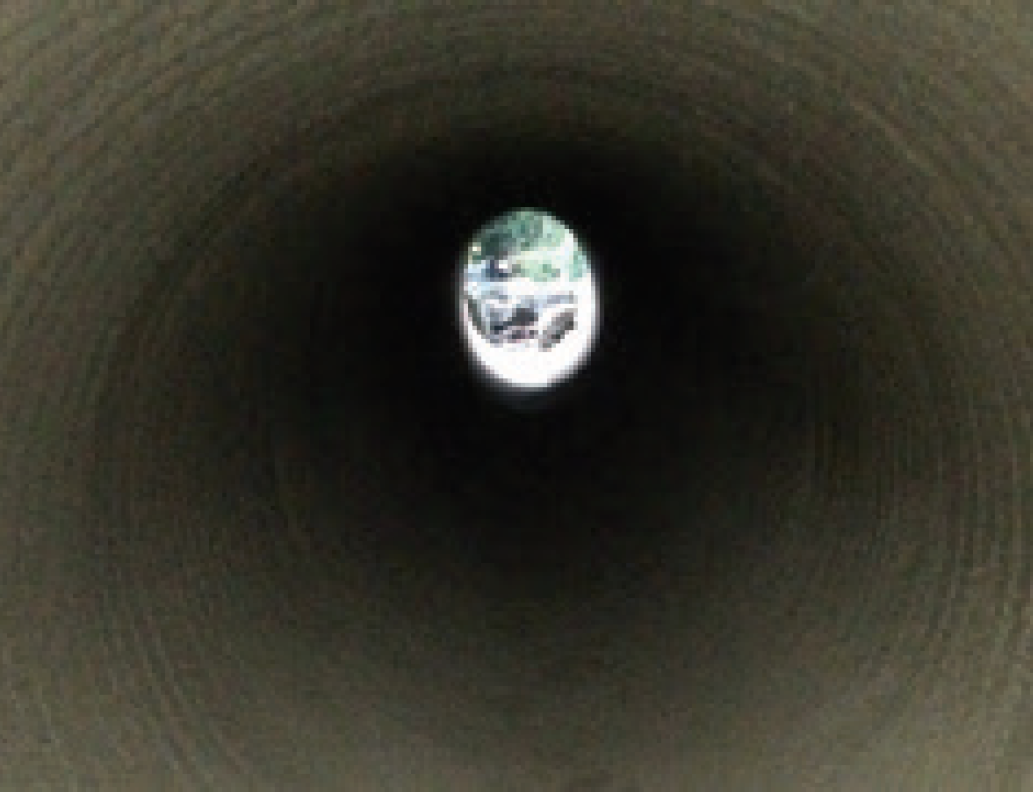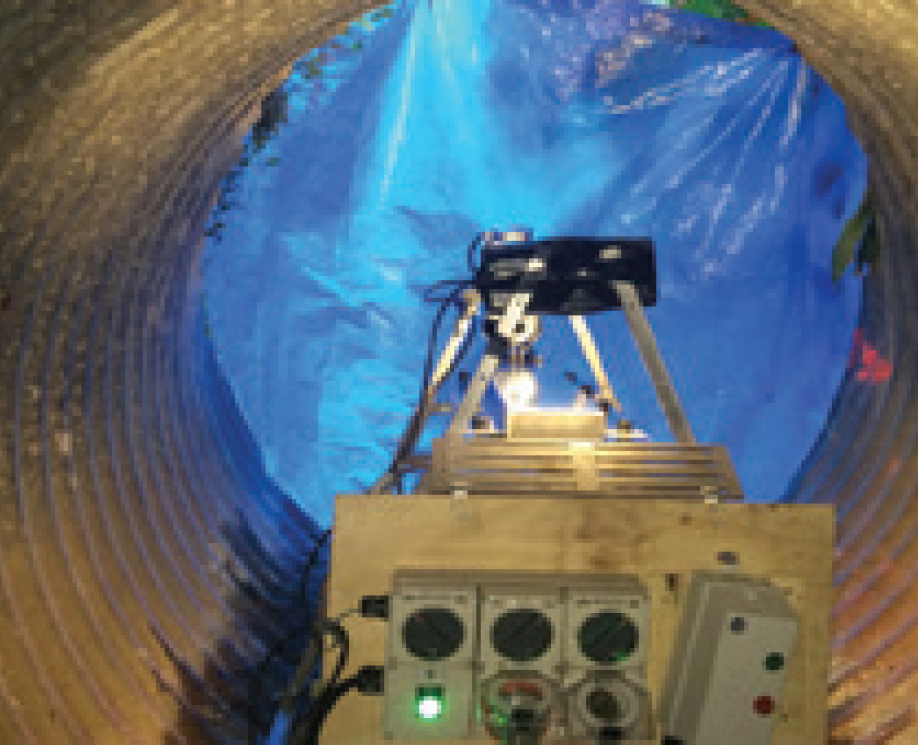WATER/WASTEWATER
PROJECT OVERVIEW
The city of Auckland, as with many other parts of New Zealand and around the world, have utilized galvanised corrugated iron culverts as part of the drainage network. Typical installations are to enable roads and rail to costeffectively traverse creeks, streams and small rivers. The original purpose for the installation of the Kashmir Road culvert is not entirely clear but could have been to improve residential development opportunities or to address streambank erosion that may have threatened an existing residential dwelling. Whatever the previous reasoning for its installation, nearby residential dwellings were under threat due to the looming collapse of the 1.8 meter (70 inches) diameter culvert as a result of eroded ground support and missing culvert invert for the majority of its 30 meter (98 feet) length. The local council was concerned that failure of the pipe could destabilize adjacent land and cause flooding of neighboring properties.
OPTIONS
1) Open Cut Replacement – 14 days
Removal of old pipe and replace with new pipe. This option would require sheet piling to support the nearby residential dwellings and while it was technically feasible, it was discounted due to environmental concerns, cost and disruption to local residents.
2) CIPP – 7 days
Installation of resin-impregnated liner inside old pipe. Minimized risk to local residential dwellings. Ability to perform works with minimal disruption to local residents. Some concerns of impact on stream fauna.
3) GeoSpray – 7 days
Reinstatement of lost culvert invert using premixed concrete to reduce some culvert collapse risk. Installation of centrifugally cast geopolymer mortar inside an old pipe to provide fully structural rehabilitation. Minimised risk to local residential dwellings. Ability to perform with minimal disruption to local residents. Environmentally friendly due to product being inert once cured.
DECISION
The Council chose GeoSpray geopolymer mortar due to the lower installation cost, limited disruption to local residents, environmental credential and performance. The city did not choose open cut due to cost, difficulties with machinery access due to site constraints, disruption and noise.
PROJECT OVERVIEW
Day 1: Complete consultation with local residents regarding project. Remove private property fencing and install temporary access stairs to gain stream access.
Day 2: Setup temporary by-pass, including upstream dam and three-stage downstream sediment traps, to protect stream. Remove woody debris and river stones. Clean culvert using high pressure water blasting equipment.
Day 3: Install concrete fill to reinstate culvert invert.
Day 4: Setup GeoSpray mortar truck and ancillary equipment and apply first coat of GeoSpray mortar to 30 meters (98 feet) of culvert and allow to set.
Day 5: Apply second coat of GeoSpray mortar to 30 meters (98 feet) of culvert and allow to set.
Day 6: Apply final coat of GeoSpray mortar to culvert.
Day 7: Clean up site, reinstate private property fencing, remove temporary access stairs and reinstate private properties.
CONCLUSION
The project delivered a quality structural rehabilitation outcome on-budget under challenging access constraints and weather conditions.
PROJECT DETAILS
Application: Storm Sewer Rehabilitation
Client: Auckland Council
Location: Glen Eden, Auckland, New Zealand
Installation: March 2016
Contractor: Concrete Treatment NZ Limited





